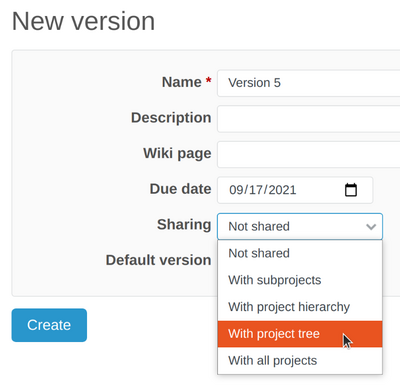The current guide will show you the difference between the core Redmine Version and the Sprint new feature of the Agile plugin. Using them in combination will be a powerful Agile methodology for your team.
- The old and new backlog
- What is a backlog?
- How to plan your version and sprints
- Version planning filters
- Difference between Versions and Sprints
- Sharing
The old and new backlog
In the previous Agile plugin versions, when you click on the Agile tab in your project, on the right sidebar you would find Version planning.
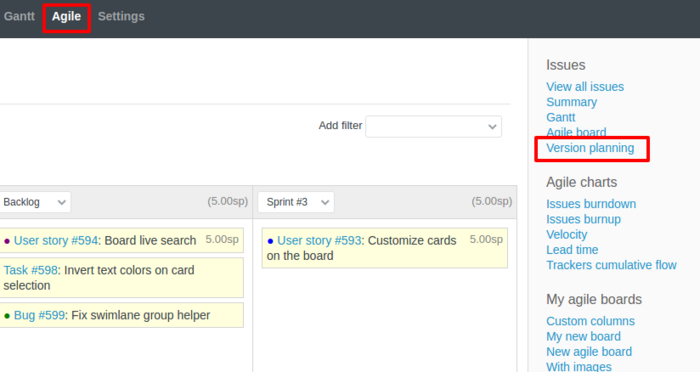
But, in the latest versions, the feature was moved in the project tabs, named "Backlog":
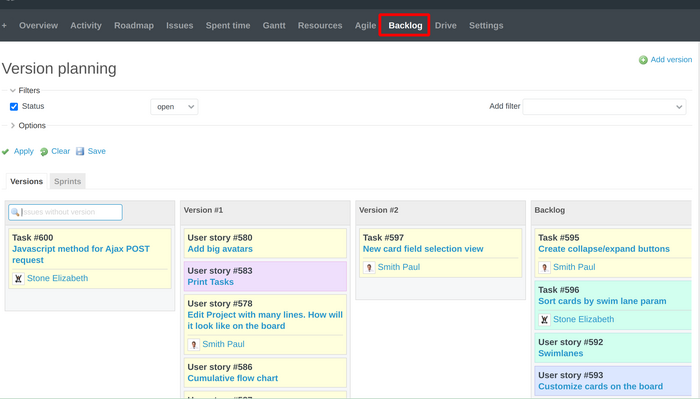
A three-column table contains your project's tasks:
- The first column is for all issues, without prioritizing
- the middle columns are for specific Versions
- the last column contains issues from the backlog - prioritized accordingly
Both Versions and backlog could be created in project settings - versions:
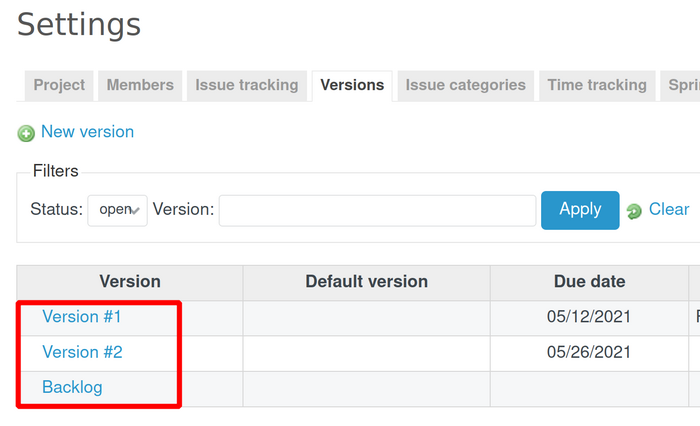
What is a backlog?
To manage your project well using an Agile approach, you have to know what tasks have to be completed to deliver a product. A backlog is a list of project tasks - user stories we want to implement - which are prioritized accordingly. To create a backlog in Redmine, you have to choose issues that have some importance for your project and move them to the backlog column in Version planning. Each task should be given a certain rank and estimation (story points or hours; to estimate a task, story points are often used, but to track the progress - time in hours, it should also be noted that a story point has its equivalent in hours).
How to plan your version and sprints
It might happen that too many tasks are in the backlog column. That's why there are Versions.
A Version is a time interval, usually one or two months (it depends on the team management, nature of the tasks and projects, and other points of complexity), during which the whole team is working to deliver tasks. The aim of a sprint is to prepare some part of the product, and during the iteration, it is being developed, tested, and shipped. The Version itself is part of the core Redmine functionality.
To plan a Version, you can move issues from the backlog column to the sprint column.
To create a new Version, you first need to create a backlog. Then click on New Version, and provide some details for it.
You can also create a new version when you edit any issue. Just click on the green plus next to Target Version:
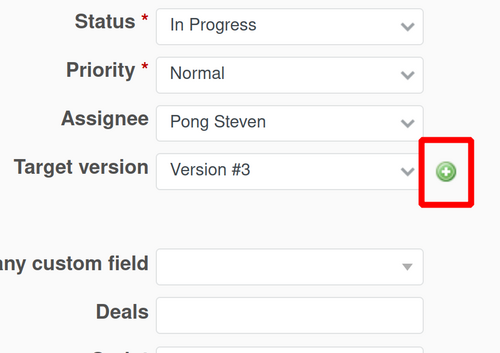
Version planning filters
You are able to filter issues in the table. You can filter tasks by author, status, tracker, priority, estimated time, and assignee.

From Agile 1.5.0, a new feature was added - Agile sprints. Now you can assign Issues to Sprints to group your work independently from Redmine Versions and track metrics for each Sprint rather than a Version. You can configure them at a separate project setting tab (create/edit them):

And you can add/remove them to issues from the edit issue page itself or from the context menu directly (it is valid for both Versions and Sprints):
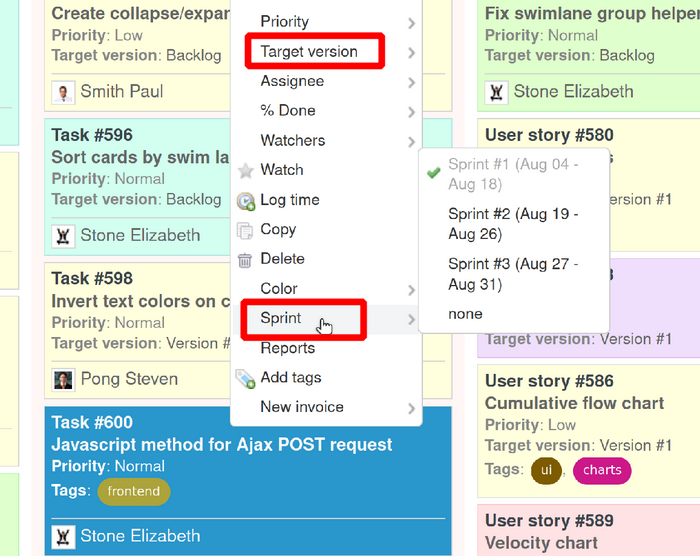
Difference between Versions and Sprints
The Sprints have start and end dates and the Versions (Releases) can now serve as a higher hierarchy level (as they have only due dates). A sprint is a short, time-boxed period when a Scrum team works to complete a set amount of work.
Sharing
Both Sprints and Versions could be shared with the following:
- subprojects
- project hierarchy
- project tree
- all projects
For Sprints:
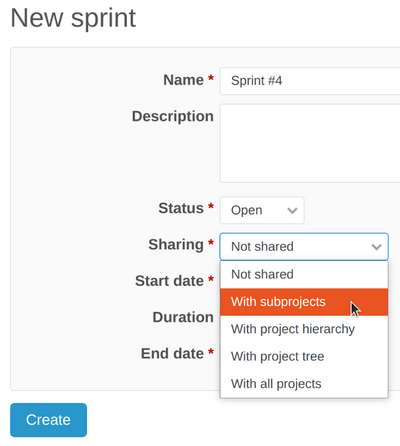
For Versions:
